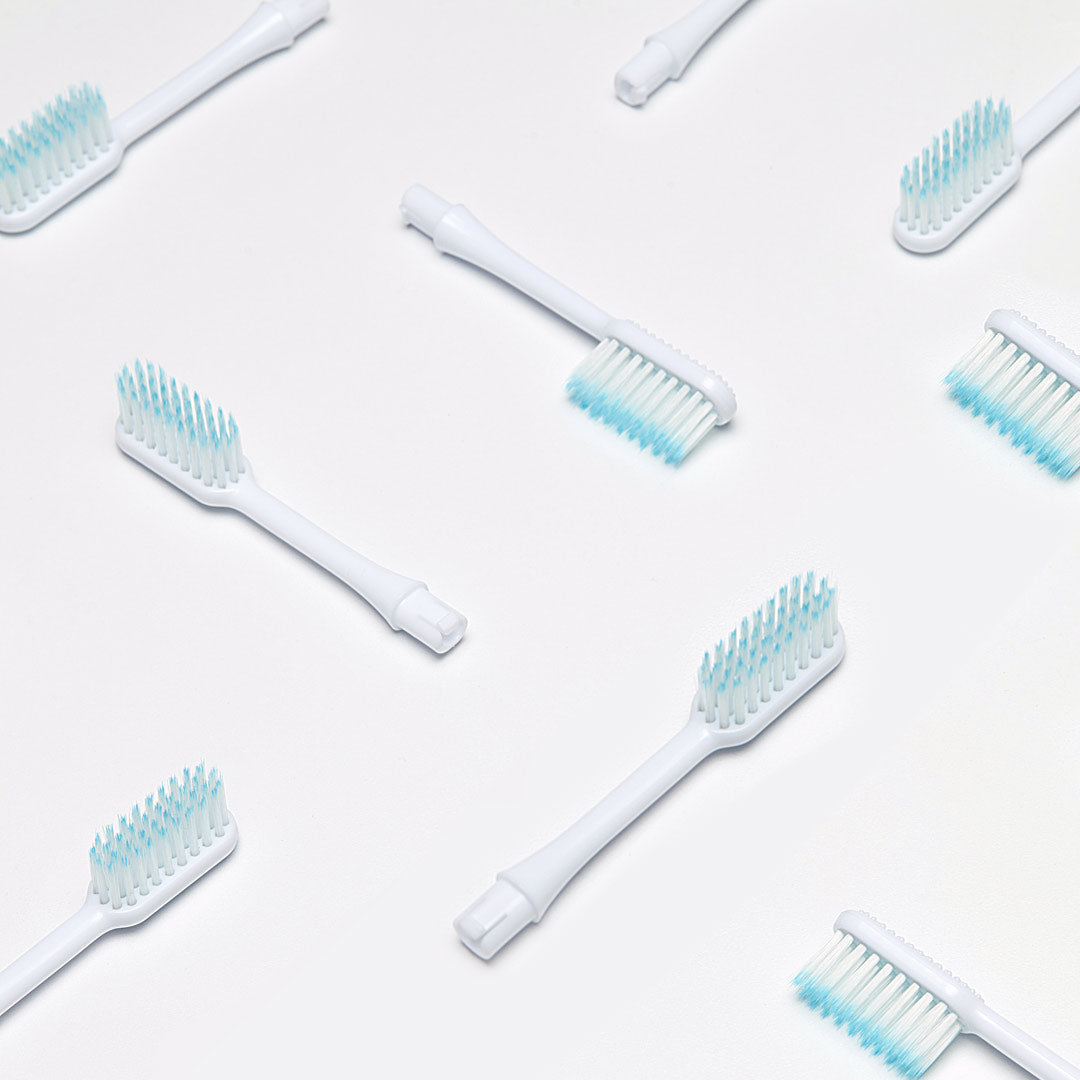When it comes to oral health, choosing the right toothbrush bristle firmness is essential. You’ve probably noticed options ranging from soft, medium, to even hard. But which one should you use? Many dental professionals, including the American Dental Association (ADA), consistently recommend soft bristle toothbrushes. Let’s dive into the soft vs medium toothbrush debate and examine the question: is soft toothbrush better than medium?
1. What the Research Says
Soft vs Medium Toothbrush – What Are the Differences?
-
Soft bristles are gentle on enamel and gums, designed to effectively remove plaque without causing damage
-
Medium bristles clean plaque slightly more aggressively due to their increased rigidity, but with amplified risk of gum abrasion and enamel wear
Even though many people prefer using medium-bristle toothbrushes because they believe it gives a deeper clean, research shows that this added firmness can come with a downside: a higher risk of gum damage.
2. Why Dentists Prefer Soft Bristles
A. Gentle on Gums & Enamel
Soft toothbrushes minimize gum trauma and enamel wear. Even the American Dental Association recommends soft bristles to preserve dental health.
B. Effective at Cleaning
Contrary to the belief that harder means cleaner, medium and soft brushes offer comparable plaque removal when used correctly.
C. Safety First
Soft bristles cushion teeth and prevent enamel abrasion and gum recession, even with unintentional hard brushing.
3. Is Soft Toothbrush Better Than Medium?
So the core question: is a soft toothbrush better than medium? The short answer: yes, for most people.
-
Soft bristles offer safer, gentler cleaning with no drop in efficacy.
-
Medium bristles may appear to clean more plaque but pose an increased risk of gum and enamel damage.
4. Choosing the Best Bristle for You
When Soft Might Be Better:
-
Sensitive teeth or gums
-
A history of gum recession or abrasion
-
You tend to brush harder than recommended
When Medium Might Be Considered:
-
You build up plaque or tartar quickly
-
You have very healthy gums and enamel
-
You brush gently and pay close attention to technique
5. Mastering Brushing Technique
Effectiveness isn't only about bristle firmness—it’s about how you brush:
-
Use 2 minutes, twice daily
-
Hold the brush at a 45° angle to gums
-
Use gentle circular strokes—don’t scrub horizontally
-
Replace brushes every 3–4 months
6. Practical Tips for Switching
Look for brushes with soft or extra-soft bristles, with angled or multi-level designs for deeper cleaning—like the Nada toothbrush. With over 2,000 five-star reviews, Nada is a customer favourite for its gentle yet effective clean, sleek design, and commitment to sustainability.
7. Final Thoughts
|
✅ Soft Bristles |
❌ Medium Bristles |
|
Safer for gums & enamel |
Slightly more abrasive |
|
Equally effective for plaque removal |
No major cleaning advantage |
|
ADA-recommended & ADA-sealed options |
Not ADA-recommended |
|
Ideal for sensitive mouths |
Risky if brushing too hard |
The verdict? For almost everyone, soft toothbrushes offer the best blend of safety and effectiveness. So, are soft toothbrushes better than medium ones? — Yes, especially considering the long-term health of your teeth and gums.
Ready to switch to a toothbrush that’s gentle on your gums but tough on plaque?
Try Nada toothbrush—soft-bristled, stylish, and built to last.



